Calling survivors of female genital cutting and health providers for a unique storytelling opportunity
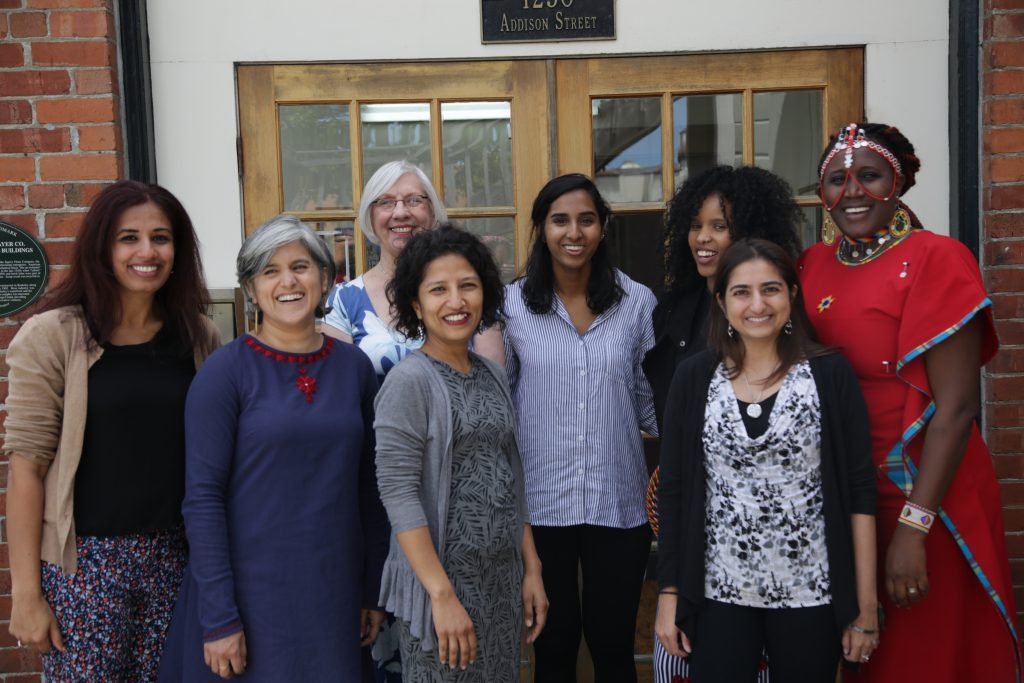
Apply to be a storyteller here!! In November 2019, Sahiyo and StoryCenter will partner with The George Washington University Milken Institute School of Public Health to host a digital storytelling workshop in Washington, D.C. Sahiyo is advocating for the abandonment of female genital mutilation/cutting (FGM/C), while StoryCenter supports organizations in using storytelling and participatory media for social change. The November workshop will focus on health and female genital cutting. With that focus in mind, Sahiyo extends an invitation to: 1) women over 18 years old, living in the United States, who have undergone FGM/C and who have a story to share about receiving healthcare in the U.S. or 2) health providers in the United States, of all genders (i.e. physicians, nurses, midwives, etc.) who have provided services to women who have undergone FGM/C. Together these groups can highlight stories about the enduring impact of FGM/C on women’s health and/or inform health professionals of the kind of care and best practices health professionals need to be aware of when working with FGM/C survivors. The resulting short digital stories will be used to better educate health professionals on how to support survivors living in the U.S. In 2018, Sahiyo, in partnership with StoryCenter, launched an inaugural digital storytelling workshop. Nine women’s stories have since elevated the conversation about FGM/C in the U.S. and globally. The stories were distributed online and via media channels, as well as at live community screening events. They are being used as educational tools to support discussion among survivors within their communities, with a focus on challenging the social norms sanctioning FGM/C, and encouraging an end to the practice. About Sahiyo: Since 2015, Sahiyo has been advocating for the abandonment of FGM/C through dialogue, education and collaboration. Sahiyo conducted the first-ever international online survey of Dawoodi Bohra women on the subject of FGM/C. Read the full report here. About StoryCenter: StoryCenter creates spaces for transforming lives and communities, through the acts of listening to and sharing stories as a vehicle for education, community mobilization, and advocacy. They collaborate with organizations around the world on workshops in story facilitation, digital storytelling, and other forms of participatory media production. Individuals are encouraged to register for storytelling workshops. About The George Washington University’s Milken Institute School of Public Health: GWU has been working closely with survivors and health care providers to develop a living virtual educational toolkit (fgmtoolkit.gwu.edu). If you would like to participate in the workshop, apply by October 14th via this link: http://bit.ly/DC_VoicesEndFGMC. View informational flyer here. Photo above is from Sahiyo Inaugural Storyelling Workshop.
The complexities of female genital cutting in Singapore: Part IV

Concluding thoughts on the practice in Singapore By Saza Faradilla Country of Residence: Singapore This blog post is the fourth in a four-part series about female genital cutting (FGC) in Singapore. This fourth installment provides a final analysis and concrete methods of engaging with discourses on FGC at the individual, community, governmental and international levels. Read part one here. Read part two here. Read part three here. In this research, I have contextualised the type of cut, stakeholders involved, on-going discussions on FGC locally and internationally, and FGC’s hiddenness. I hope this allows for a deeper understanding of the specific and unique type of FGC and the situation surrounding it in Singapore. My discussion of the reasons for FGC in Singapore is also non-exhaustive, but to my interlocutors, cleanliness, religion, tradition, and the control of female sexuality, are some of the most pertinent to their lived experiences. To the best of my ability, I have tried to represent fairly the perspectives and opinions of the various people with whom I spoke. In her book, The Twilight of Cutting, Saida Hodzic accurately pointed out that “differently positioned women take a variety of political positions toward cutting/anti-cutting campaigns, and the larger governance of their lives.” In these concluding paragraphs, I will further explore the continuity of this practice, ways to encourage productive and meaningful discourse about it, as well as policy implications. FGC has been an unquestioned tradition in Singapore for centuries. I believe we need to place a critical lens on FGC and question the motivations of this practice. While taking into account the possible individual, family and social meanings that have been attributed to FGC, it is also important to question its necessity and impact on a young girl. I end most interviews by asking interlocutors if they think FGC will continue, and 70% of my interlocutors answered in the negative. Conversations about FGC and debates on it have been ignited, and more young parents are questioning the cut’s necessity. Once parental pressure is no longer a factor and this procedure has skipped a generation, FGC will be much harder to revive or continue. Sometimes the type of FGC done in Singapore does not leave visible scars or markings. Those against FGC have said that they know of young parents who choose to say their daughter has been cut even if she hasn’t, and no one is any wiser. It is also important to take note of the vernacular languages that are used when discussing FGC, and determining the appropriate ways to debate FGC in the Malay community. Currently, the debates on FGC happen amongst specific circles of young Malays who are highly educated. It is important to engage with the older generation and those who may not have access to tertiary education about this practice. It is only in sincere conversations, which aim to listen, engage in dialogue, and not necessarily debate that perspectives will shift. When I first found out about the FGC performed on me when I was a baby, and questioned my parents about it, they insisted that it was mandatory and that they did it for my own good. They said FGC was necessary for “religious and health reasons, and so I won’t be adulterous.” These are similar to the reasons my interlocutors shared as well. As I went about my research, and interviewed religious leaders, medical practitioners, and feminist activists, I slowly clarified my parents’ beliefs, and today they no longer see it as mandatory (“though still good to do”), but I do think chipping away at their long-held beliefs has been successful. Similar to my interlocutor’s sharing that the language of female sexuality, children’s rights and consent is foreign or even “Western,” I think it is important that we find the right language and vocabulary to discuss these issues in Malay so that it is more readily accessible. I hope to see more people and stakeholders engaging in these conversations. In particular, I hope this blog post would encourage medical practitioners, religious leaders, religious bodies and health ministries to enter the conversation about FGC in Singapore. From my ethnography, there are various undercurrents and rumors of the perspectives and policy positions engaged by these stakeholders. For instance, a medical practitioner said that there is a register of doctors who perform it and who have informally agreed to abide by a set of guidelines in order to standardize the procedure. However, neither this guideline nor register is publicly available. Having them come out with actual statements would clear various misconceptions about FGC’s necessity and its health and religious implications. I would urge the Islamic Religious Council of Singapore (MUIS) to replace the fatwa it removed with a new one, so that religiously, the Muslim community can be assured of the ruling for FGC. The Ministry of Health (MOH) and Muslim Healthcare Professionals Association (MHPA) also have a responsibility to the larger Singapore community to ensure our safety and health. Because all doctors are registered and regulated under MOH, it is up to MOH to determine if FGC is aligned with the medical oath to do no harm. At the same time, it would be interesting to find out the positionality of medical practitioners performing FGC. Do they believe it to be necessary? Do they abide by the guidelines stated, especially given the spectrum of FGC that my interlocutors underwent? What are their specific reasons for performing FGC? Silence only breeds confusion. It is definitely time for the religious and health authorities to step up and clearly state their positions on FGC in Singapore. There is the very real fear that if FGC were banned in Singapore and practitioners disallowed from practicing it, this would lead to FGC being performed underground, where conditions are much less hygienic and can be more harmful. But, if the relevant authorities can counter the health, religious and female promiscuity reasons given for FGC, this practice will be regarded as unnecessary and might no longer be practiced here. According
Female Genital Cutting Diaries: Addressing the chief in Mali
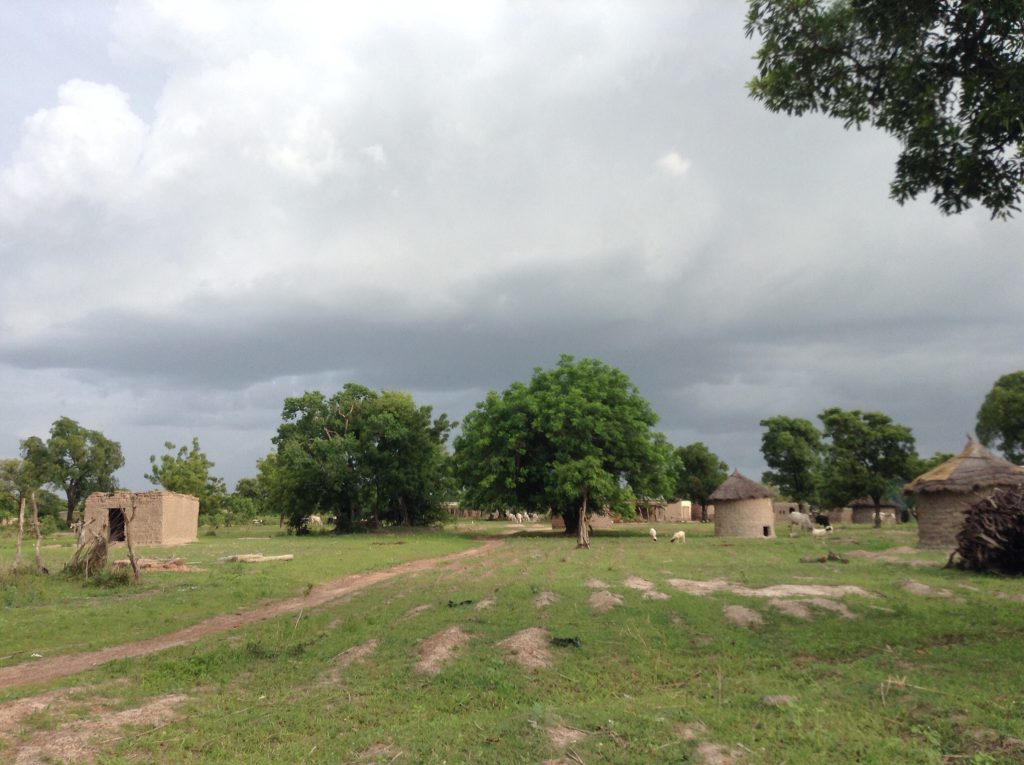
by Jenny Cordle [This is Part 2 in a series of posts about Jenny’s experience of learning about female genital cutting happening within the Malian community in which she lived. Part 1 details her stumbling upon the aftermath of a cutting in Konza.] As the editorial intern at Sahiyo, I’ve been reading the stories of women who’ve been sharing their experiences with female genital cutting with the world. Each story is so important, and reminds me of the stories of girls and women who shared their experiences with me during my time in Mali, West Africa. I lived in Mali from 2006-2009, but I went back in 2014 to work on a project about FGC within my community. Five years after my Peace Corps service, my old mud brick house in Konza was occupied and Mali was hotter than I remembered. I flew back to visit friends, but I also wanted to explore the impact female genital cutting (FGC) had on community members. Cutting in Mali is as ingrained in society as pounding millet for dinner. The Sikasso region of Mali in which I lived maintains a 90.9% prevalence rate of FGC. I had Kodak prints with me taken on the day of the cutting in Konza that I’d been privy to years prior. There were 21 girls of varying heights who gathered under a tree for a photo — all barefoot, and all wearing long fabric over their heads with colorful patterns of stripes, leaves, acorns and sunbursts. The girls in the group photo were adorned in head wraps, a symbol of their new status in the community as having been cut. They stood in a crescent shape in front of a mango tree. Only one adult woman out of the four present was wearing a long piece of solid white fabric covering her head. There was a lone silver tea kettle sitting in the dirt in front of them. Even though I can hardly look at the prints because of the emotion that’s palpable on their faces, it doesn’t occur to me that showing them to others during my search girls may be triggering for the girls in the photos. I remembered a meeting I held with the community elders in a round mud brick structure near the end of my time in Konza during Peace Corps. Women hardly ever attend these meetings, let alone call them and set the agenda. About ten men sat on the floor ready for my monologue. I’d worked for a year with Binta, the midwife and the only health practitioner in the community. She hadn’t been paid in six months. The community had given her grain for sustenance, but didn’t give her monetary compensation. Binta was in Sanso, a mining town with her husband, and wasn’t present for the meeting. I began by telling them that she works all hours of the day birthing their babies and burying placentas, as well as taking care of other ailments and injuries outside of her purview. They understood but expressed that they simply did not have the money to pay her. Paying her would involve pooling a small amount of money from every household in the community monthly. I paused. And then I let the words roll off my tongue in Bambara. “When cutting season comes, you find the money to pay the cutter to cut your girls, but you won’t find the money to pay the midwife.” The chief of the village, nearing 100 years old, had been lying on a cot. I was sitting on the edge. He bolted upright next to me and said, “Crazy woman!” to the men in the room. I laughed. I told them if they didn’t pay her they would not be receiving another volunteer. A few weeks later, they paid Binta for the full six months. They welcomed me into their community and I threatened them by conjuring one of their most sacred traditions. I felt powerless that young girls in the community were being violated and no one was doing anything about it to my knowledge. I also could not understand how you could avoid paying the midwife for birthing your children. I’m sure there are a myriad of reasons, not the least of which is that the community members live in one of the poorest countries on Earth. But my reasoning was simple: if you can pay a person to inflict pain in the name of tradition, then you can pay a midwife to ensure your wife and children have access to safe delivery. I had brought the printed portraits of the girls I photographed the day of the cutting in 2007, in hopes that I could interview them about their experiences with FGC. None of my friends could identify the girls. My translator suggested we try to interview the girls I photographed in a different series I also had with me called The Chair Portraits. Since the girls in that series lived in close proximity to me, my friends knew who they were and and where they could be found. Most of these girls were now teenagers who worked in the field all day. They too had all been cut years before. One had moved to another community to work in a gold mine. Another, Yaya Kone had gotten married and moved to a nearby village. Jemani Kone moved five kilometers away to Kouale, a nearby community on the main road to Sikasso. Several were still in Konza. Jenebou Kone was the first to agree to talk about how and where the cutting took place, and how it affected her. We walked to the northern part of the village for privacy and sat under a tree. I pulled out my RCA digital voice recorder and after she gave me her consent, I pressed record. (This blog is the second in a series of blogs meant to inspire a larger, global conversation about girls’ and women’s health and rights, cutting as a practice, and
Sahiyo Stories screened at Academy of Communications in Healthcare Workshop

By Renee Bergstrom, EdD On January 30, 2019, I presented the workshop: Patient Engagement through Brief Focused Videos featuring the Sahiyo Stories at the Academy of Communication in Healthcare (ACH) Winter Course in Scottsdale, Arizona. ACH endeavors to promote empathy and better communication among health care providers, patients and families. I prepared throughout my adult life to someday share my story to advocate to end female genital mutilation/cutting (FGM/C). This groundwork included learning through formal education, plus strengthening the emotional, social and spiritual foundation of my being. The purpose in showing the Sahiyo videos was two-fold: to promote deeper understanding of female genital mutilation’s impact on survivors, and to discuss the storytelling process and the feasibility of ACH engaging patients’ trauma stories through focused videos. Three women attended the workshop I hosted, including the president of the organization who is a nurse midwife. After the workshop, their evaluations were positive. “I think this was a powerful video that was personal to Renee,” a participant said after watching my video. “It provided an example of what might be possible to create for patients through ACH. That would be an entire different brainstorm session. This video was so impactful that it was hard to move on in this session.” “Pre-work (writing story) was very helpful and heightened my receptivity/engagement.” I found it crucial to share Sahiyo’s work with the very caring doctors and nurses who are fellow faculty members and have placed the link to the Sahiyo stories on the ACH library page. Renee Bergstrom, EdD, is an educator who advocates for relationship-centered medical care. She and her husband, Gene, have been married 53 years. They have three children, ten grandchildren and one great-grandson. They live in a dynamic art town in midwest America where they are very involved in the community. Renee has been an advocate for women’s justice throughout her life.
For survivors and their doctors: An online tool about female genital cutting
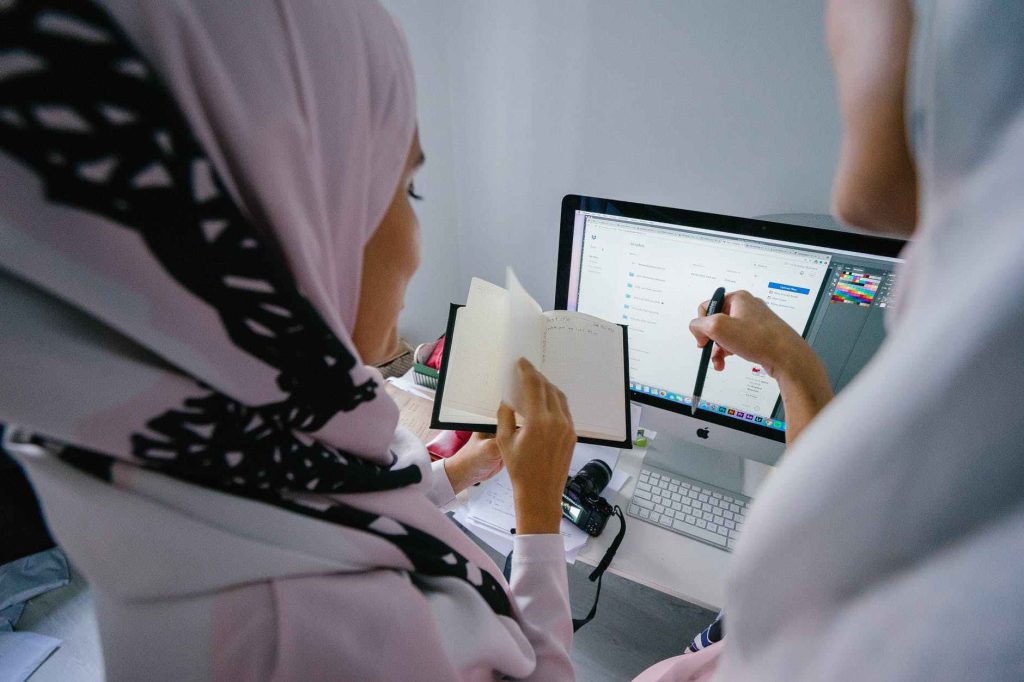
By Brionna Wiggins One day, fifteen years ago, while Karen McDonnell was teaching reproductive health at George Washington University (GWU), a student of hers was absent from the class. While that may not seem out of the ordinary, it was quite strange for this particular student. He was a diligent medical doctor from Guinea who attended the university for a Master’s in Public Health. He never missed a class before. Upon his return, Karen asked him if everything was okay. He told her that he had almost lost his wife. His wife had given birth to their first child, but when she was young, she underwent female genital cutting (FGC), and it caused complications during the delivery. No one knew how to properly care for her at the hospital while she delivered, and she nearly bled out. In short, those caring for her were unprepared for her case. “This isn’t something I was interested in yesterday,” Karen said, alluding to the years she’s spent on this project and reflecting on how far she’s come in understanding FGC. She remembers hearing about it in undergraduate school. Back then, FGC was simply an issue mentioned in passing during class. For the students in her graduate school at that time, it may not have seemed like there was anything to be done about it. “It’s a cultural practice, you can’t change culture. So let’s make it safer,” Karen said the instructors told students. The best solution at the time was medicalization, perhaps even providing clean blades. Karen knew that it still didn’t seem right and didn’t feel comfortable with the idea. The blade may be cleaner, but the potential health issues would remain. Karen pressed on working at George Washington University, spending decades focusing on domestic violence in her work. But the incident with her student sparked the motivation for advocacy. “That student changed my life in opening my world to [FGC].” Since then, Karen has worked with the former students and current students to educate others about how to care for those who have undergone FGC. She simply started by talking more in-depth about the practice with her students so they were made aware of the topic. Then two years ago, when the Office on Women’s Health came out with a funding mechanism for a medical project, Karen thought, Finally, we’re getting some attention here! They began working with survivors and RAHMA: a DC-based organization that addresses the stigma around HIV/AIDS in the American-Muslim community, as well as advocates against FGC. The team at GWU was awarded the health-focused funding to do work on a project that would teach other health practitioners how to give provisional care for those who have undergone FGC. Thus started the development of an online toolkit to educate women and healthcare providers on a topic that was once shrouded in secrecy. This toolkit is intended to be easily accessible and resource-filled with proper terminology and answers to questions that aren’t usually asked. The members of the team include a variety of survivors, advocates, health professionals, and others on-board with the multi-year program. In-depth interviews were conducted for both survivors of multiple countries and health-care providers that worked with survivors. The interviewers asked a myriad of questions: Tell us your experience? How did you get involved? If you had a toolkit, what would you want in there? What would you want providers to know? What do you want women to know? What’s even better is that women are coming forward with the willingness to share their stories, thanks to increased awareness and support from organizations such as Sahiyo that encourage them to do so. A turning point for these women had to do with their health: they started questioning why they had urinary infections and trauma they’ve carried since childhood. Beginning this conversation was the first step. The online toolkit is useful for survivors, their doctors, and others in the community. It will have an optimized search and curated content, which ensures that the information is scholarly, reliable, accurate, and useful for the website visitors. While doctors would ideally ask their patients about certain conditions that affect them, this resource can potentially fill in their gaps of knowledge when interacting with their patients. Additionally, the kit would cover essential concepts for survivors to ask health professionals. The team plans to have a community tool section that can be used by men and religious community leaders. Karen and many others are making a difference by working on this resource for survivors and their doctors. By understanding the complications that accompany their condition, it will ensure they receive proper support. More on Brionna: Brionna is currently a high school senior in the District of Columbia. She likes drawing, helping others, and being able to contribute to great causes.
The complexities of female genital cutting (FGC) in Singapore
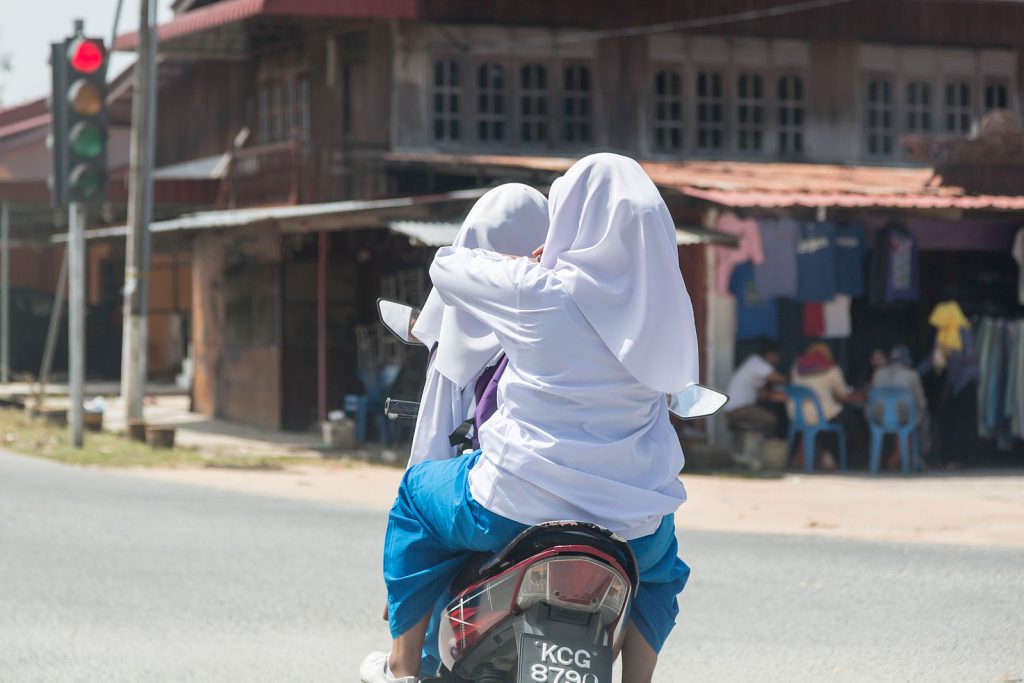
By Saza Faradilla Country of Residence: Singapore This blogpost is the first in a four-part series about female genital cutting (FGC) in Singapore. This first installment details the historical, social and economic contexts of FGC in Singapore. It also explains the limitations of academic discourses on FGC in the Southeast-Asian region, and especially Singapore. It was a Saturday afternoon in September 2016 when my dad picked me up from university and we headed over to a relative’s house in Sembawang. We only ever gathered there for special occasions. This time, it was my cousin’s second birthday. We entered the room, and it was full of relatives in brightly colored shirts, jubah (long Malay dress), jeans and scarves. Of course, the star of the evening, my 2 year-old cousin, Anisah, donned a red and blue sailor outfit. I went to pick her up and carried her around the room. A 38-year old female relative, wearing a simple combination of black t-shirt and jeans came over to speak to me, and my sister, who was also around us. Relative (R): “Anisah minggu lepas dah kena sunat (Anisah was cut last week).” Saza (Sa): “Apa? (What?)” R: “Ya, kat doctor (Yes, at the doctor).” Sa: “Huh, perempuan kena sunat? (Women need to be cut?)” R: “Ya (Yes).” Sa: “Tapi ini salah! Ini against WHO guidelines semua. Ini human rights violation (But this is wrong! This is against WHO guidelines. This is a human rights violation).” Sis: “You pun kena sunat. (You were cut, too).” My jaw dropped. I had never known about this cutting, and I was completely unaware that it was performed on me. I did not know it was performed on young children, and consented to by their parents at medical clinics or with traditional midwives. My complete lack of knowledge until that moment about a practice that my relative described as necessary for women speaks a lot to the specific kind of female genital cutting (FGC) in Singapore: its hiddenness, prevalence amongst the Singaporean Malay community, the debate surrounding the procedure, and reactions to it. This sparked an interest in researching about FGC for seminars during my undergraduate studies at Yale-NUS in Singapore, which eventually culminated in a year-long thesis on this practice. Context of FGC in Singapore It is unclear when the practice of FGC first began in Singapore. In 1998, researchers Andre Feillard and Lies Marcoes theorised that FGC reached Southeast Asia as part of Islamic traditions linked to the Shafi’i school of thought, but the spread of the practice to other parts of Southeast Asia is ambiguous. FGC in Singapore involves female Malays, who make up about 7% of the population (420,000 people). Out of these, there is an assumed prevalence of 60% of Malay women who have been cut. Previously, this procedure was performed by traditional midwives at homes, but now it is mostly conducted at 5-10 private clinics by female Malay doctors around the island. It costs about $30-50, and takes less than 30 minutes. There is no law or legislation banning FGC in Singapore. In Singapore, Type I FGC is performed, though there is also a spectrum of this particular cutting – from symbolically placing a medical instrument (usually scissors) at the clitoris, to nicking the clitoral hood, to removing the hood itself. It is usually performed on young children below the age of five. The Malay community holds differing views relating to this cutting. Some view it as mandatory, while others are more ambivalent, and some actively campaign against it. Research (or lack thereof) on FGC in Singapore FGC in the Southeast Asian region received very little academic attention until 1885. Andree Feillard and Lies Marcoes argued that it was only in 1885 that the Dutch ethnographer G. A. Wilken conducted a thorough survey of the practice in the region. He was the first to draw the conclusion that female circumcision was found exclusively among Muslims, which led him to believe that it was not an indigenous practice, but rather one “borrowed from the Arabs”. In the only anthropological study of FGC in Singapore, Gabriele Marranci (an Australian anthropologist) explained why this practice is so hidden. He suggests that this is a form of “religious ethnic resilience within an environment affected by an increasing push towards globalisation and national identity”. According to him, the structural inequalities faced by the minority Malay community have led them to hold strong to traditional rites and rituals as a way of ensuring the togetherness of the community. Here, he also references Kevin Hertherington’s concept of the Bund, which is defined as “an intense form of affectual solidarity, that is inherently unstable and liable to break down very rapidly unless it is consciously maintained through the symbolically mediated interaction of its members”. Secondly, he also points out that the government is keen to keep FGC hidden to avoid “opening a debate in Singapore that would not only involve the Malay Muslim community, but all Singaporeans as well as international observers”. Taking a pro-FGC stance would upset the international human rights community such as the United Nations and NGOs as well as receive backlash from the local feminist community. On the other hand, criticising FGC might be seen as an “attack on the Malay community itself”. A third reason is that the Malay Muslim community do not see this cutting as significant or think it necessary to be brought up for discussion. It is a tradition that is simply accepted as part of an early childhood ritual. However, Marranci does not clearly address the idea that if the cut is so hidden such that the women themselves are unaware of it, how does that solidify the identity of the community? As such, my research aims to build upon this question by understanding the reasons that compel Malays to practice female genital cutting. Part 2 of this series will focus on cleanliness and religious reasons given for female genital cutting in Singapore. Saza is a Senior Executive of service learning
Wrestling with trust and fear in regard to female genital mutilation
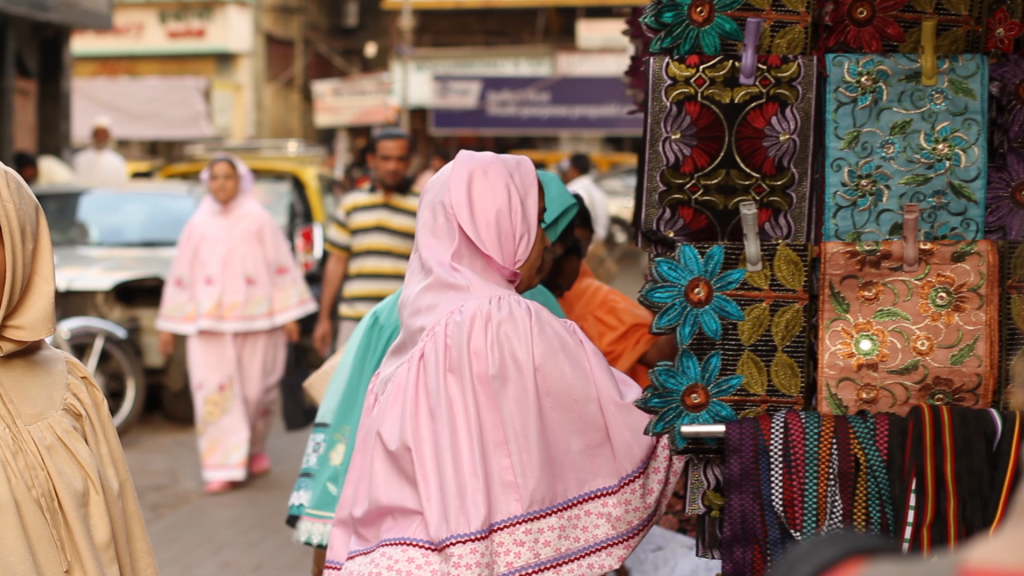
By Farzana Esmaeel Country of Residence: United Arab Emirates Trust and fear are two emotions that have an interesting correlation to input and output of human behavior. One emotion, trust, establishes safety and comfort for individuals whilst the other, fear, displaces the very premise of safety and comfort. At the age of 7, you don’t articulate emotions; you feel them. And your mother is your beacon of trust. She loves you, comforts you, cares for you and sacrifices for you. Then, when trust is removed, it’s only natural to feel extreme pain and deceit at her hands the most. My sister and I were taken to a dilapidated, dimly lit building at the far end of the city on the pretext that we were going to meet an aunt for a check-up. At the tender age of 7 when mum tells you we are going for a check up you don’t appreciate entirely its meaning, and at the time it meant to me that we were going to see a doctor. What followed was unprecedented, and a memory that will be etched in our minds forever. Sadly. The pain was too much to bear as 30 years ago, female genital mutilation (FGM) in the Dawoodi Bohra community was generally more practiced under callous and less “sterile” ways. (Yet, even today, when it is practiced by licensed white coat doctors under more hygienic conditions, it doesn’t make the practice correct.) The overarching feeling I took after my experience 30 years ago was deceit. My mother is a simple, non-confrontational, less informed person, who at the time of my sister and my cutting, played into the hands of a community (mindset) that propagates fear: fear of being ‘ostracized’ for not having FGM done, fear of her daughters being ‘impure’, fear of standing up against cultural norms and practices. Though today, this same woman hasn’t once told either of her daughters to carry out this inhumane practice on her granddaughters. She now understands the pain and futility of it all. FGM is a practice entrenched with ‘fear,’ stripping human ‘trust,’ and inculcating in young girls early on to be apologetic about their sexuality and their desires. It is on us to be the change. We must question this violation of human rights and ensure that we raise our voices against this harmful practice, not just for our daughters, but the many more daughters all around us.
Trauma and Female Genital Cutting, Part 6: Effects of FGM/C on the Lower Urinary Tract System
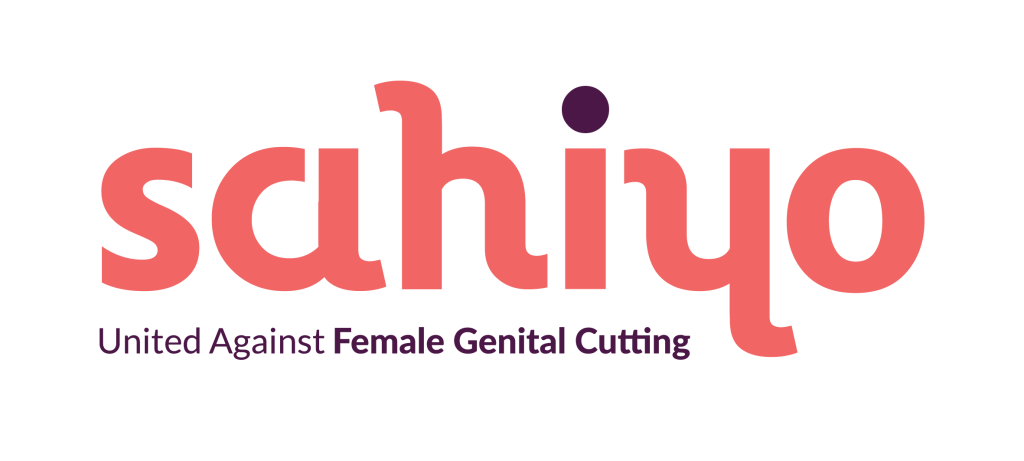
(This article is Part 6 of a seven-part series on trauma related to Female Genital Cutting. To read the complete series, click here. These articles should NOT be used in lieu of seeking professional mental health and counseling services when needed.) By Julia Geynisman-Tan, MD Background FGM/C has no known health benefits, but does have many immediate and long-term health risks, such as hemorrhage, local infection, tetanus, sepsis, hematometra, dysmenorrhea, dyspareunia, obstructed labor, severe obstetric lacerations, fistulas, and even death. While the psychological, sexual, and obstetric consequences of FGM/C are well-documented (refer to prior posts in this series), there are few studies on the urogynecologic complications of FGM/C. Urogynecology is the field of women’s pelvic floor disorders including urinary and fecal incontinence, dysfunctional urination, genital prolapse, pelvic pain, vaginal scarring, pain with intercourse, constipation and pain with defecation and many other conditions that affect the vagina, the bladder and the rectum. Urogynecologists are surgeons who can both medically manage and surgically correct many of these issues. FGM/C and Urinary Tract Symptoms One recent study from Egypt suggested that FGM/C is associated with long-term urinary retention (sensation that your bladder is not emptying all the way), urinary urgency (the need to rush to the bathroom and feeling that you cannot wait when the urge comes on), urinary hesitancy (the feeling that it takes time for the urine stream to start once you are sitting on the toilet) and incontinence (leakage of urine). However, the women enrolled in this study were all presenting for care to a urogynecology clinic and therefore all of them had some urinary complaints so it is difficult to tell from this study what the true prevalence of lower urinary tract symptoms are in the overall FGM/C population. Therefore, given the significant number of women with FGM/C in the United States and the paucity of data on the effects of FGM/C on the urinary system, my research team studied this topic ourselves in order to describe the prevalence of lower urinary tract symptoms in women living with FGM/C in the United States. Publication will be available online in December 2018. We enrolled 30 women with an average age of 29 to complete two questionnaires on their bladder symptoms. Women in the study reported being circumcised between age 1 week and 16 years (median = 6 years). 40% reported type I 23% type II 23% type III 13% were unsure Additionally, 50% had had a vaginal delivery; and 33% of these women reported that they tore into their urethra at delivery. Findings: A history of urinary tract infections (UTIs) was common in the cohort: 46% reported having at least one infection since being cut 26% in the last year 10% reported more than 3 UTIs in last year 27% voided ≥ 9 times per day (normal is up to 8 times per day) 60% had to wake up at least twice at night to urinate (once, at most, is normal) Most of the women (73%) reported at least one bothersome urinary symptom, although many were positive for multiple symptoms: urinary hesitancy (40%) strained urine flow (30%) intermittent urine stream (a stream that starts and stops and starts again) (47%) were often reported 53% reported urgency urinary incontinence (leakage of urine when they have a strong urge to go to the bathroom) 43% reported stress urinary incontinence (leakage of urine with coughing, sneezing, laughing or jumping) 63%reported that their urinary symptoms have “moderate” or “quite a bit” of impact on their activities, relationships or feelings What’s the Connection Between FGM/C and Urinary Symptoms? Urinary symptoms like the ones described above can be the result of a number of factors. Risk factors for urinary urgency and frequency, incontinence, and strained urine flow include pregnancy and childbirth, severe perineal tears in labor, obesity, diabetes, smoking, genital prolapse and menopause. However, given the average age of women in our sample and the fact that only half of them had ever had a vaginal birth, the rate of bothersome urinary symptoms are significantly higher than has been previously reported. FGM/C may be a separate risk factor for these symptoms. Interestingly, the prevalence of urinary tract symptoms in our patients closely resembled that of a cohort of healthy young Nigerian women aged 18-30, in which the researchers reported a prevalence of lower urinary tract symptoms of 55% with 15% reporting urinary incontinence and 14% reporting voiding symptoms. The authors do not mention the presence of FGM/C in their study population but the published prevalence of FGM/C in Nigeria is 41%, with some communities reporting rates of 76%. Therefore, it is likely that many of the survey respondents had experienced FGM/C, thereby increasing the prevalence of lower urinary tract symptoms in their cohort. In the study of women in Egypt referenced above, those with FGM/C were two to four times more likely to report urinary symptoms compared to women without FGM/C. The connection between FGM/C and urinary symptoms can be understood from the literature on childhood sexual assault and urinary symptoms. Most women who experience FGM/C recall fear, pain, and helplessness. Like sexual assault, FGM/C is known to cause post-traumatic stress disorder, somatization, depression, and anxiety. These psychological effects manifest as somatic symptoms. In studies of children not exposed to sexual abuse, the rates of urinary symptoms range from 2-9%. In comparison, children who have experienced sexual assault have a 13-18% prevalence of enuresis (bedwetting) and 38% prevalence of dysuria (pain with urination). The traumatic imprinting acquired in childhood persists into adult years. In a study of adult women with overactive bladder, 30% had experienced childhood trauma, compared to 6% of controls without an overactive bladder. There is a neurobiological basis for this imprinting. Studies in animal models show that stress and anxiety at a young age has a direct chemical effect on the voiding reflex and can cause an increase in pain receptors in the bladder. Additionally, the impact of sexual trauma on pelvic floor musculature has been well described. Women who
Working Together To Address FGC: Michigan Roundtable

On October 9th, Sahiyo, along with Equality Now, Tahirih Justice Center, and forma came together in a roundtable discussion with Michigan’s Department of Health and Human Services (DHHS) to engage in cross-discipline dialogue on the challenges and best practices regarding how to respond to FGC in the United States. The roundtable discussion helped attendees to increase their knowledge base on FGC, understand the medical circumstances associated with FGC, and identify strengths, gaps, and policy/law implications that could improve outcomes for children and families. Sahiyo’s Mariya helped to facilitate this initial roundtable, and continues to work with DHHS on next steps to ensure that we work to address the issue of FGC, and how to support survivors, in a holistic manner.
‘I feel dirty and violated’: A Bohra survivor of Female Genital Cutting shares her story
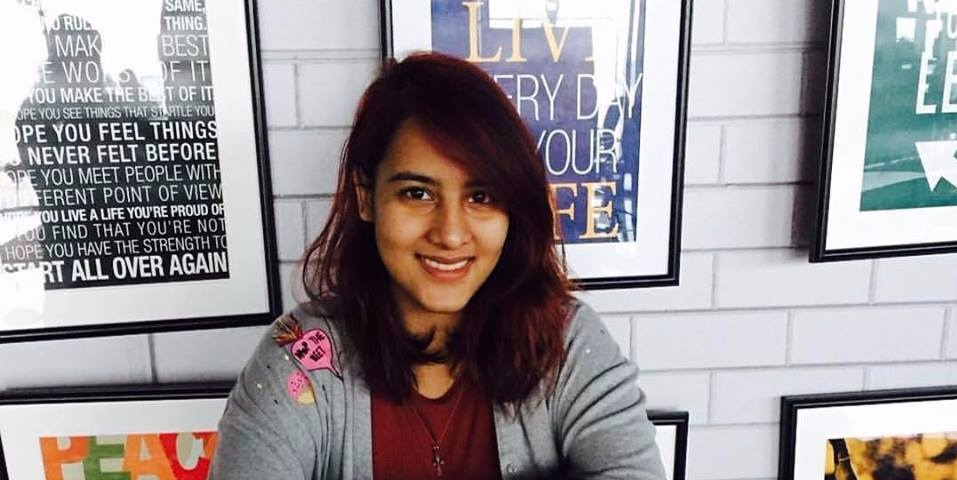
By Shaima Bohari Age: 21 Country: India I don’t remember how old I was. I remember just that I was a very young girl. My family and I were vacationing in Indore, Madhya Pradesh, in a small house not far from my maternal grandmother’s in Noorani Nagar. My mother called me, told me to change and said my grandmother was going to take me out for a little while. Me being the weird kid I was, I got excited. So we set out, my nani and I, on a little walk around the block. She explained to me that we were going to see an older lady who was going to help me with something that was for my own benefit. When we reached the house, my nani talked to this lady and introduced me to her. We went into a room in the back where three other older ladies were present. I was told to remove my pants and lie down on a mat laid out on the floor. I felt afraid and naked and my nani told me to just relax and held my hand. The women around me held down my arms and legs, keeping my legs apart. The lady of the house came in with something sharp in one hand and a cloth in the other, and she knelt down beside my legs. She used something like a glass to make a small cut and then pinched something near my vagina. I vividly remember screaming my lungs out and hitting and punching whoever was near my hands, flailing around like I was possessed. It was a short ordeal but it felt like hours had gone by since I’d left the house. I was told to get up and get dressed. As far as I can remember I wasn’t bandaged or covered with anything but the clothes that I came with. My nani gave me an envelope with some money and asked me to give it as salam to the lady who had mutilated me just minutes before. I was crying even as I kissed her hand and then left with my nani for the walk back, in my blood-stained clothes. After we came home, my mom laid me down on the bed on a set of sheets. Again I was naked from the waist down, and was told to stay there until the bleeding had stopped. I pushed that memory down and out, or at least I tried to. I could never really forget it though, and now I’m not sure I want to. It was a barbaric and horrible event that I had to go through, but I don’t want to repress it because clearly, that hasn’t worked until now. I suffer from a myriad problems because of that one incident in my life. I still don’t know how to deal with it. I suffer from pain in my vagina, I can’t look at myself naked, I have self-esteem and body issues because every time I look at myself I feel dirty and violated. I doubt I will ever be able to have a relationship with my future spouse if I decide to get married because I can’t imagine it. I suffer from severe depression which, at least partly, stems from this. To all the men who have the audacity to tell me that this barbaric mutilation of the female form is inconsequential and alright because it is a religious act: it’s easy for you to say this since you haven’t gone through the trauma. Also as we all know, this systematic, brainwashing and torturing of women is a weapon in your hands. To all the women who defend female genital mutilation, I want you to know that you are an insult and a curse to all the women who have suffered from the traumas of FGM, and it is YOU who make it okay for men to abuse us. You give them the power to mutilate and oppress us when you stand against other women. Although I cannot speak for any higher power out there, you will find no forgiveness from me. I also want to point out that although I do blame my grandmother, and my mother, and every member of my family who didn’t stop them, and those who let their own daughters, nieces, cousins, and granddaughters be mutilated, I understand that the majority of the blame lies with the institution that made them believe that this is righteous. Finally, I ask anyone who reads this to talk to any woman you know about this. Tell them they’re not alone, and that it doesn’t make them any less of a human for having gone through this. Talk to other people, raise awareness about this inhuman practice, so that it is no longer a taboo topic. So that women everywhere are able to open up about their horrific past and know it wasn’t their fault.
